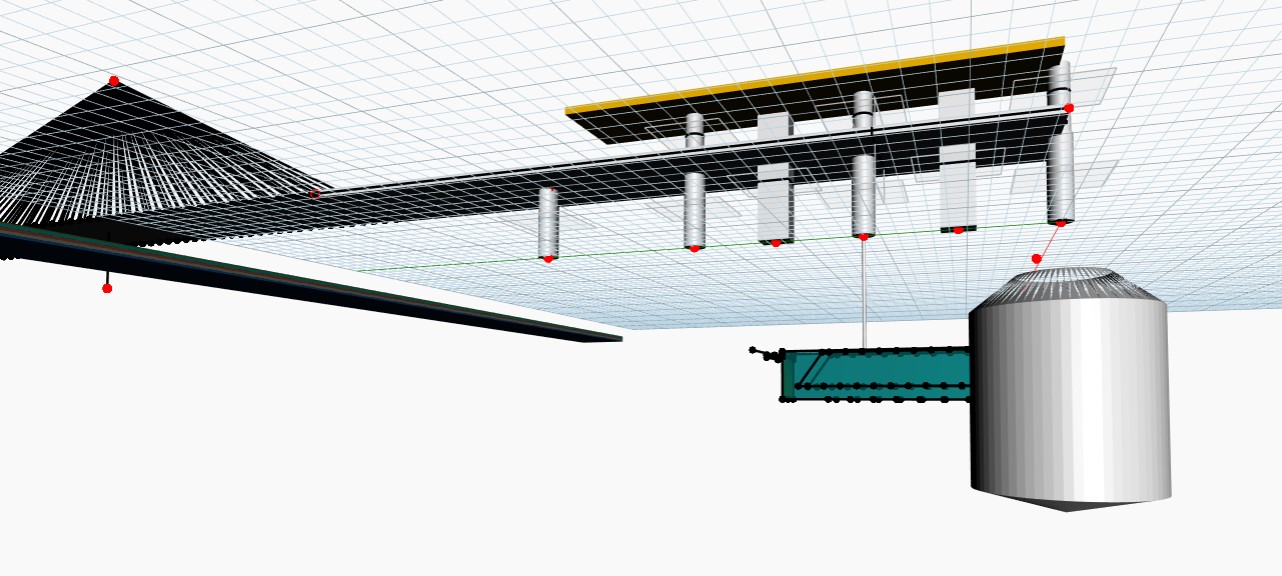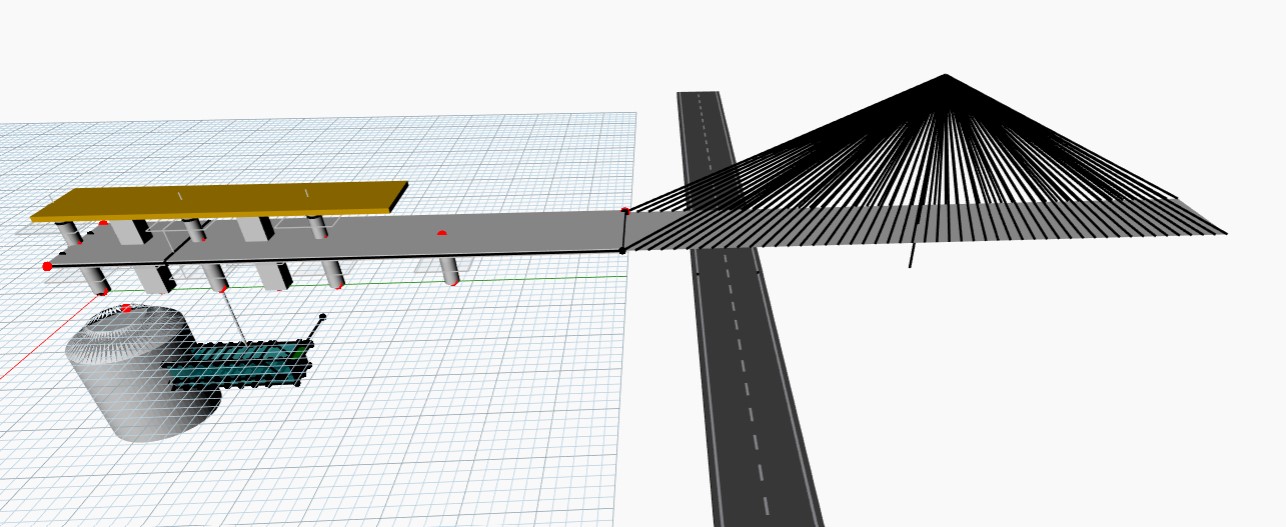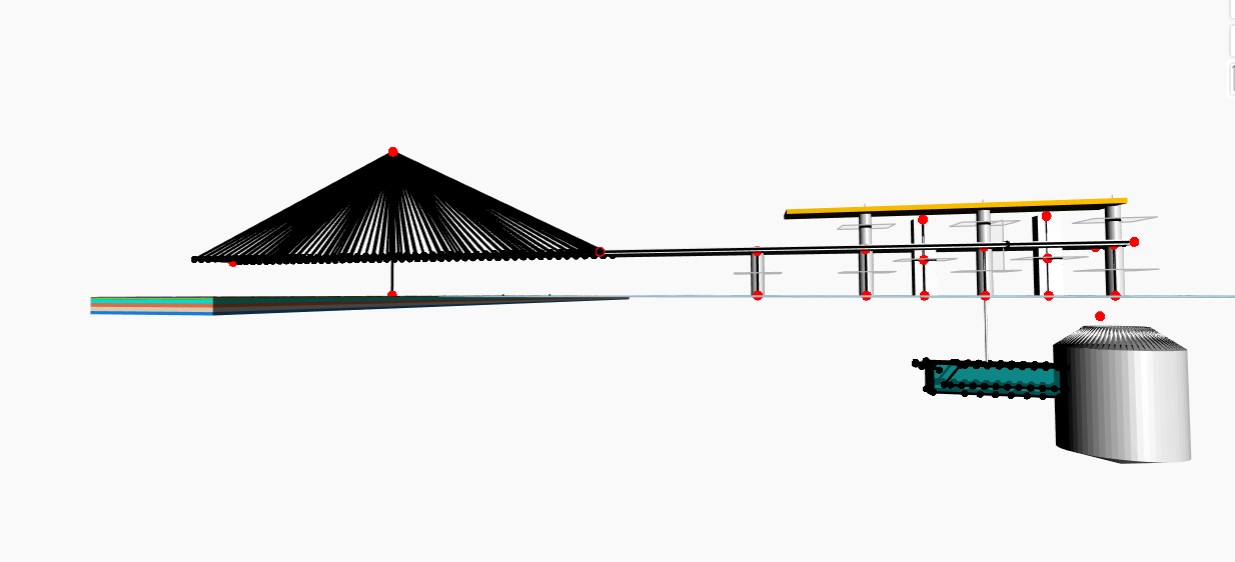The model can be downloaded here: link
The challenge for the combined parametric model was to make an inclusive and environmentally-friendly upgrade of the existing Tiergarten S-Bahn station with a water reclamation plant, highway underneath for easier connections, and a redesign of the bridge to bear a higher load due to increased freight traffic on the rail lines.
Added components:
- Two elevators
- Pipe connecting the two wastewater treatment systems
- Conceptually, the pedestrian crossing lights as well as speakers and LCD screens for arrivals/departures
Figure 1: Cross-section view of the parametric model with all five subsystems
With the added focus on inclusion, the following changes were made to the existing system:
- Elevators: A second elevator was added, so that if one of them is out of service, there is still one working. In addition, riders entering from either side of the station have an elevator closest to their respective entrances, decreasing wait times.
- The entrance on the Str. des 17. Juni (South) side was widened, which is also the wheelchair accessible entrance to the elevator but is very narrow. Currently, a wheelchair user would need to wait for the stream of people to pass when a train arrives before they can go to the elevator.
- Typically, elevator shafts in metro stations are designed to accommodate standard elevator sizes, which often range from 1.5 meters to 2.5 meters in width and depth, with heights that can vary significantly depending on the number of floors served. For instance, a common dimension for a single elevator shaft is approximately 1.6 meters by 1.6 meters, which is suitable for a standard passenger elevator (Passi et al., 2021). A commercial elevator typically measures 5 feet by 7 feet (or about 1.5 meters by 2.1 meters) to 8 feet by 8 feet (or about 2.4 meters by 2.4 meters). These elevator dimensions can vary based on the specific needs of the building, the passenger capacity, and local building codes.
- Due to the location of the wastewater tanks in the basement, noise in the neighborhood is reduced.
- Additional speakers for auditory arrival/departure information are to be added for visually impaired riders. Downstairs, some LCD signs for current arrivals/departures should also be added in the final stages of the station upgrade.
- The pedestrian crosswalk lights should be re-timed to avoid an observed effect in the current timing scheme, which is that the average pedestrian cannot cross the whole Str. des 17. Juni in the allotted time and must wait for the lights to turn green a second time (or more frequently, run across while there is no car). The timing should be optimized for pedestrians to encourage multimodal transportation over car traffic and prioritize pedestrian safety (so that pedestrians don’t have to crowd in the middle island or feel the need to run across the street).
In the end, three visually similar solutions were created to the parametric model, called “small,” “medium,” and “large,” corresponding to expected passenger volume and budget for the redesign. The input parameters are summarized in Table 1 below. The “small” solution is shown in the screenshots of the model on this page.
Table 1: Input parameter values by design option in the combined parametric model
 Figure 2: Underground view of the station upgrade with wastewater treatment (sedimentation tank and sludge digester)
Figure 2: Underground view of the station upgrade with wastewater treatment (sedimentation tank and sludge digester)
 Figure 3: Aerial view of the station upgrade with road, bridge, and station roof
Figure 3: Aerial view of the station upgrade with road, bridge, and station roof

